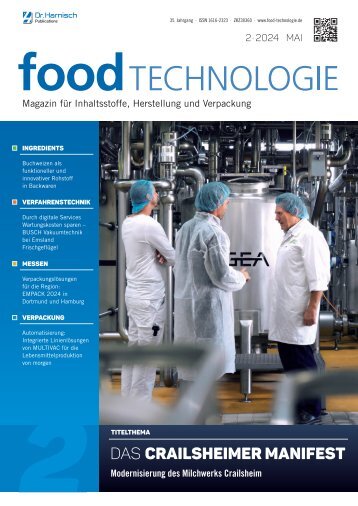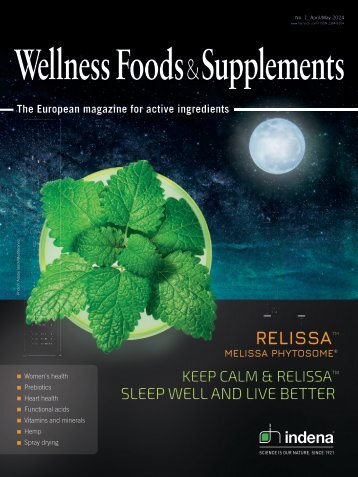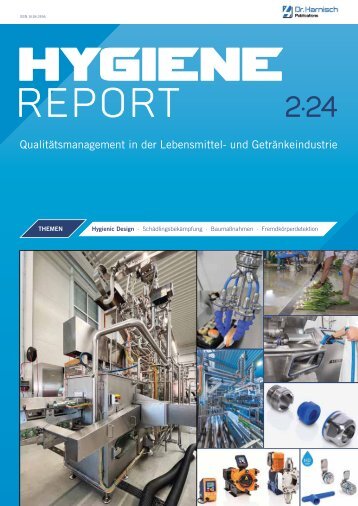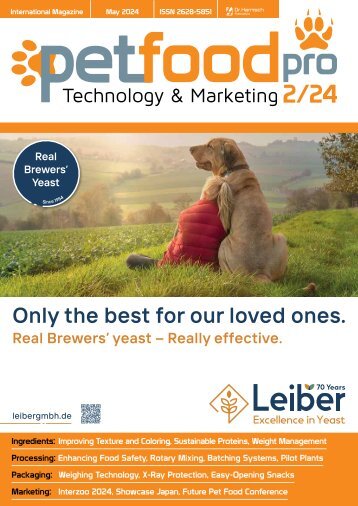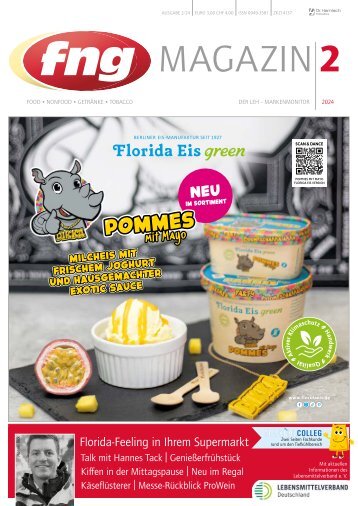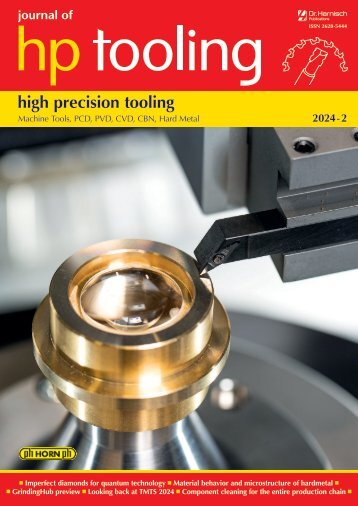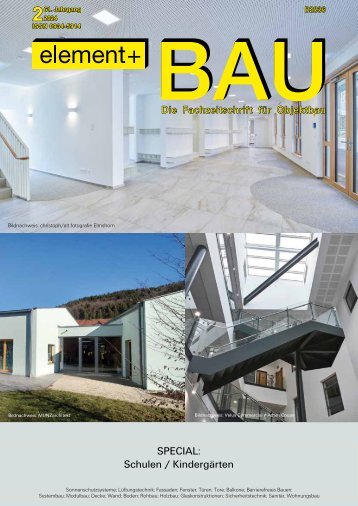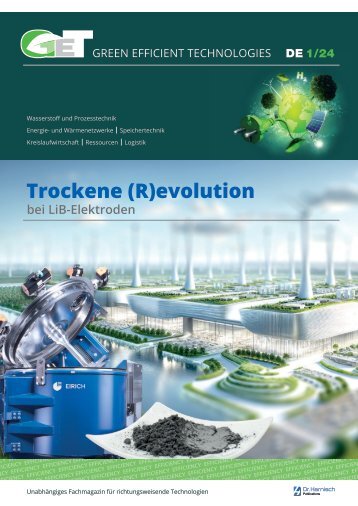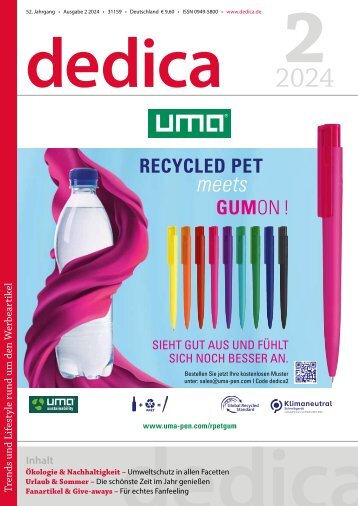food Marketing - Technology 5/2022
- Text
- Harnischcom
- Coconut
- Processes
- Packaging
- Processing
- Ingredients
- Germany
- Products
- Cinnamon
- October
- Marketing
Processing the
Processing the food and beverage sectors, from basic tubular heat exchangers to fully integrated pasteurization/sterilization and aseptic filler systems, as well as a number of specialist products such as evaporators, ice crushers and melters, direct steam injection systems, air removal systems and pumps. All of these are hygienically designed from the start to facilitate clean operation and prevent the types of product contamination discussed above. All HRS products designed for food use meet 3A Sanitary Standards. Furthermore, HRS equipment is particularly designed to facilitate product removal and subsequent cleaning. It has always been a challenge for food and drink businesses to implement effective and rigorous CIP regimes which meet the necessary standards in a way which minimizes the loss or degradation of saleable or useful product. One example is the HRS R Series of rotating scraped surface heat exchangers which can physically remove product without the need for traditional pigging or flushing systems. The R Series is suitable for a range of heat transfer applications and its unique design enables high viscosity products to be pumped with reduced back pressure and lower energy use. The helical spiral is fitted with scrapers – which scrape the surface of the tubes to prevent fouling in normal use – can Avoiding contamination is a crucial aspect of food safety also be run in reverse; thereby enabling valuable product to be recovered prior to routine cleaning or product changeover. This design feature means that much of the product can be removed from the HRS R Series without the need for additional pumps or pressure systems, reducing both CAPEX and OPEX. HRS also produces a Product Recovery System, which combines continual monitoring of a set parameter (for example Brix, pH or viscosity) with the three-way valve technology employed in every HRS pasteurizer or sterilizer. Working together, these two systems ensure that all product which meets the set parameters is utilized and only that which falls outside (for example, Food processing equipment should be designed to allow easy access for cleaning and to prevent areas where product or materials can build up that diluted prior to or during CIP) is discarded. Furthermore, such monitoring helps to validate the effectiveness of CIP and ensures that following a cleaning cycle, only product that meets specification is allowed to proceed. The hygienic design and construction of food processing equipment is an essential but often overlooked aspect of controlling the safety and quality of food and drink products, playing a crucial role in preventing contamination and allowing other food safety procedures to be carried out. fmt 1 Food production and food safety: https://www. ncbi.nlm.nih.gov/pmc/articles/PMC1116029/ 2 https://www.highspeedtraining.co.uk/hub/ four-types-contamination/ 3 Food Equipment Hygienic Design: An Important Element of a Food Safety Program: https://www.food-safety.com/articles/3705- food-equipment-hygienic-design-an-importantelement-of-a-food-safety-program The Author Matt Hale, International Sales & Marketing Director, HRS Heat Exchangers 28 food Marketing & Technology • October 2022
Processing HYGIENE TECHNOLOGY - MADE IN GERMANY CLEAN-FIELD Sole and wheel cleaning KOHLHOFF Hygienetechnik GmbH & Co. KG 29 59423 Unna · Germany · Phone: +49 2303 981830 · www.kohlhoff-hygiene.de food Marketing & Technology • October 2022 We are looking foreward to your visit GULFOOD MANUFACTURING · DUBAI · 8. – 10.11.2022 Dubai World Trade Centre · German Pavilion · Hall 1 · Stand S1-G3 Key No. 103008
- Seite 1 und 2: 5/22 Vol. 36 • 31377 ISSN 0932-27
- Seite 3 und 4: Editorial The Dairy Dilemma There i
- Seite 5 und 6: tting Technology 9/6/22 3:14 PM Vol
- Seite 7 und 8: Cover Story against their height po
- Seite 9 und 10: ogy 9/6/22 3:14 PM 31377 Cover Stor
- Seite 11 und 12: Ingredients Online & In-Person 28 N
- Seite 13 und 14: Ingredients using modern distillati
- Seite 15 und 16: Ingredients Key No. 102117 food Mar
- Seite 17 und 18: Ingredients however, still places a
- Seite 19 und 20: Ingredients methodology, the prebio
- Seite 21 und 22: Ingredients Loryma_Plant based Sala
- Seite 23 und 24: Processing food Marketing & Technol
- Seite 25 und 26: Processing If you solve the heating
- Seite 27 und 28: Transforming global food production
- Seite 29: Processing When designing equipment
- Seite 33 und 34: Processing dehydration, stems, peel
- Seite 35 und 36: Processing CURO-16 packing system,
- Seite 37 und 38: Packaging The Movikit software modu
- Seite 39 und 40: Packaging With the help of the auto
- Seite 41 und 42: FILTECH February 14 - 16, 2023 Colo
- Seite 43 und 44: Marketing automatically billed. In
- Seite 45 und 46: Marketing Food & Beverage Industry
- Seite 47 und 48: Marketing Visit to Equiproin in Oss
- Seite 49 und 50: Events Cinnamon oil flavoring For t
- Seite 51 und 52: Events 8-10 NOV 2022 DUBAI WORLD TR
- Seite 53 und 54: The Global Leader in Food Cutting T
Unangemessen
Laden...
Magazin per E-Mail verschicken
Laden...
Einbetten
Laden...








































